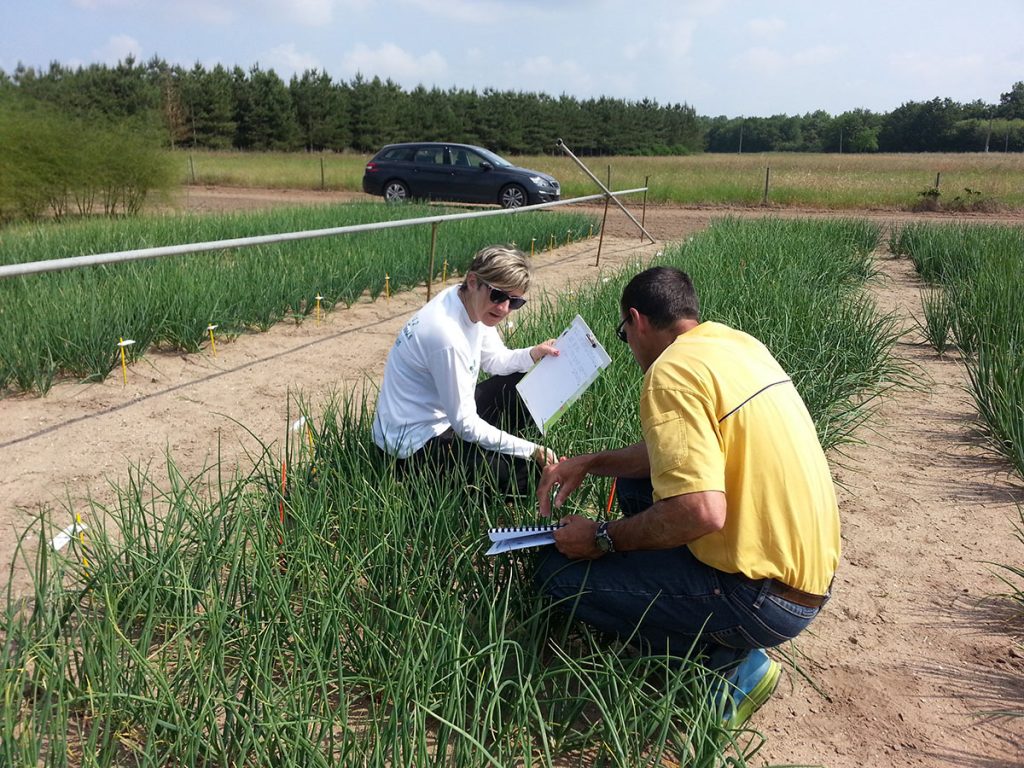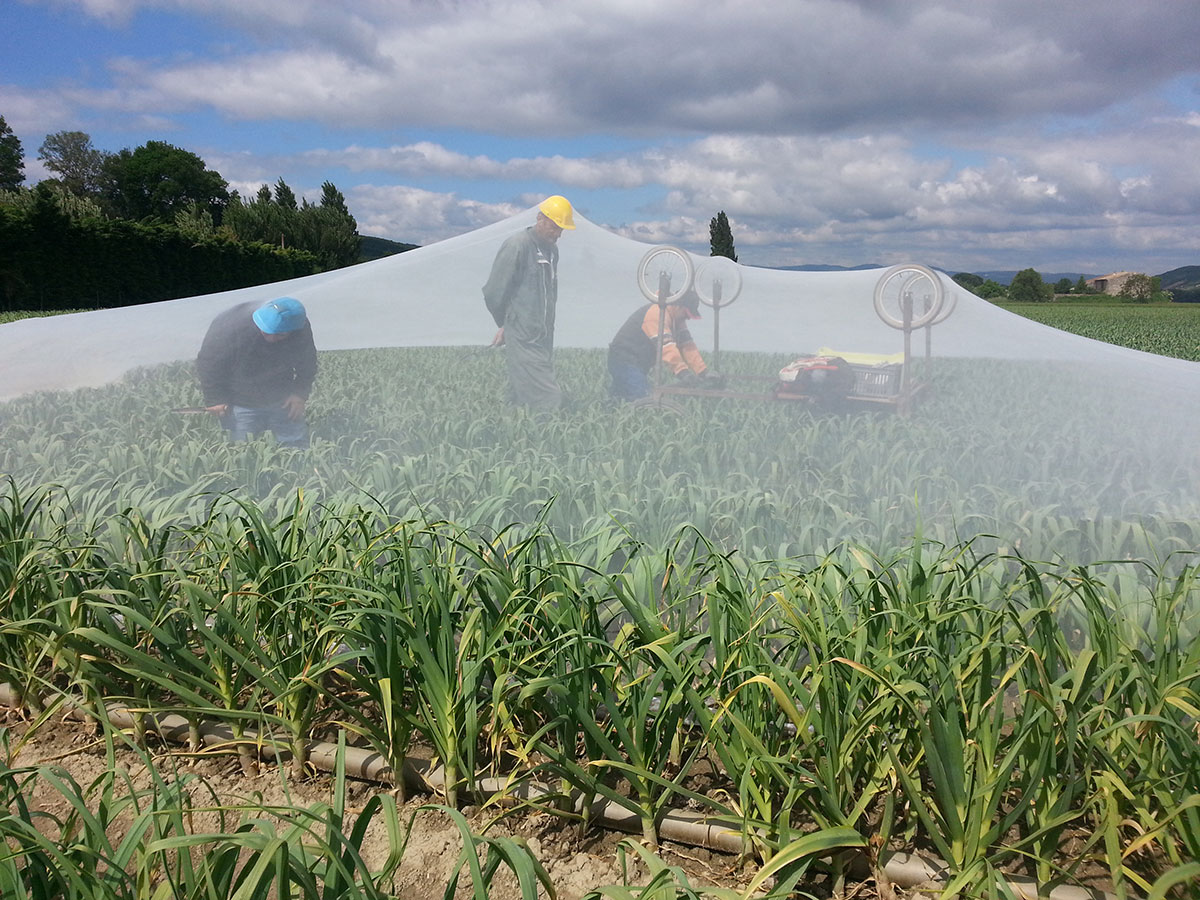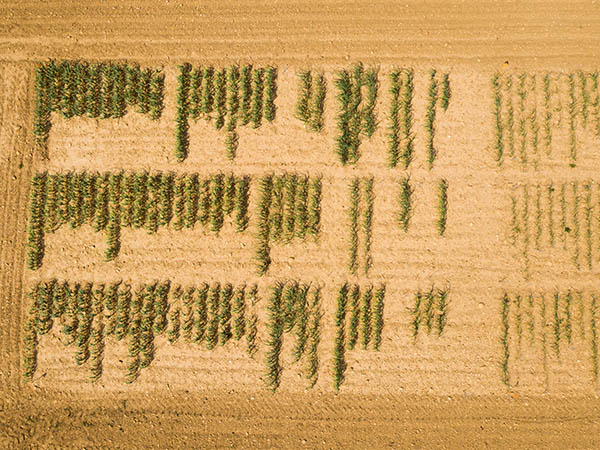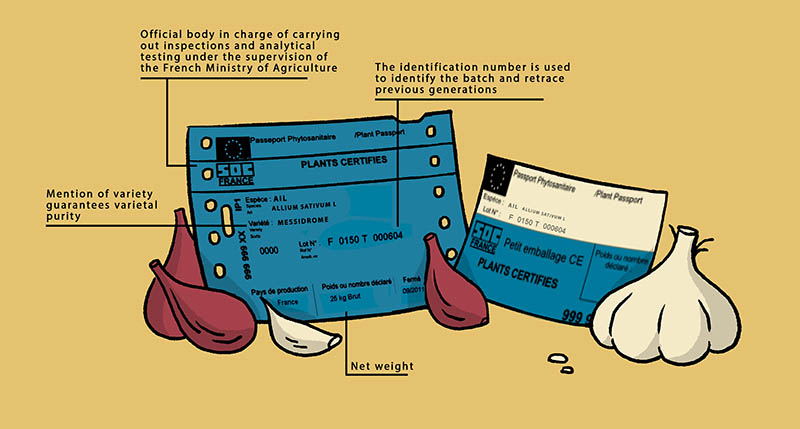The French Monitoring Process: step-by-step
Phytosanitary monitoring
In order to obtain the best quality garlic plants, professionals have implemented a strict production scheme. The first three generations are systematically propagated under insect-proof tunnels, safe from any risk of exterior contamination.
Controls, tests, and registration of these informations (under the supervision of the Official Inspection and Certification Body SOC) for all steps of plants production : admittance procedure for inspections, statutory declaration, monitoring and inspection of crops, monitoring of the phytosanitary status of harvested crops and certification.
You can find all informations about the Official Inspection and Certification Body (SOC) on GNIS website.


1. Admittance procedure
The monitoring process of plants certification conditions is based on a principle of prior authorization issued to any company that wishes to produce and certify plants: admission to control.
This admission is granted after company evaluation to check if it able to set up a certification system for wish species.
Admission to control is issued by the chief of the Official Inspection and Certification Body (SOC) and its retention is subject of supervision of certification rules of all process steps.
2. Strict requirements
Analytical tests must be carried out if it cannot be confirmed with certainty that the soil is free of nematodes.
The statutory declaration form must be filled in with the information regarding the certified plants: name of producer farm and producer, plant characteristics, mother plant, etc… This information is used to check whether the plot presented for inspection has effectively been planted with certified mother plants.
Pre-basic and basic material
Except where crops are grown under insect-proof tunnels, crops must be separated from other Allium crops by a minimum distance of:
- 300 meters for varieties and generations listed in Category 1
- 100 meters for varieties and generations listed in Category 2
Category 1: Varieties that are susceptible to viruses, or which have been selected or regenerated and screened for OYDV and LYSV viruses.
Category 2: Varieties that are tolerant or immune to viruses and which are only screened for severe mosaic symptoms.
Certified plants
Except where crops are grown under insect-proof tunnels, crops must be separated from other Allium crops by a minimum distance of :
- 100 meters for varieties and generations listed in Category 1
- 10 meters for varieties and generations listed in Category 2
Only land that has not been cultivated with plants of the genus Allium in the last five years can be used for propagation.


3. Strict inspections apply
14 producer farms, backed by a team of 13 technicians approved by the Official Inspection and Certification Body (SOC), carry out strict inspections at every stage of the production process.
Crop rating sheets are filled in with the follow-up information relating to crops: plot number, date of inspection, rating per criteria, classification, etc.
Applicable standards for crop classification
For certified plant French producers have imposed themselves more exigent norms than european norms (CE quality).
| Percentage of plants that do not comply with varietal characteristics or which present symptoms (after purification) |
CE quality (European)
according to the directive 93/61/CE |
|||
| F0 – F1 – F2 | F3 – F4 – F5 | Certified plants | ||
| Varietal purity (% impurities) |
0 % | 0 % | 1 % | sufficient |
| Mosaic virus diseases (1) |
0 % | 0,1 % | 1 % | Substantially unscathed |
| White rot Sclerotinium cepivorum |
0 % | 0,1 % | 1 % | Substantially unscathed |
| Nematodes Ditylenchus dipsaci (2) |
0 | 0 | 0 | Substantially unscathed |
(1) all symptoms of mosaic virus infection by OYDV and LYSV for varieties and generations in Category 1 and severe forms of these diseases for varieties and generations in Category 2
(2) analytical tests are mandatory in order to check there is no contamination by nematodes
4. Long-term inspections
Every year, producer farms (trial plot) and the SOC (crop inspection) grow a trial crop in order to check the identity, varietal purity and phytosanitary status (viral disease) of certified plants.
Batches presented for certification are checked
1 batch = 1 crop, 1 origin, 1 classification.
Bulbs that are too small or damaged are removed. Batches that are sold must not contain more than 5% plants showing damage which might affect regrowth.

French Certification of shallot and garlic plants

The blue certification label delivered by the SOC is warranty of the respect of the process of control and traceability. It is delivered only if results are conform with the standards of the technical regulation.
The blue certification is assigned to a batch.
1 batch = 1 crop, 1 origin, 1 classification.
Also gardener certified plants carry the blue certification label.
